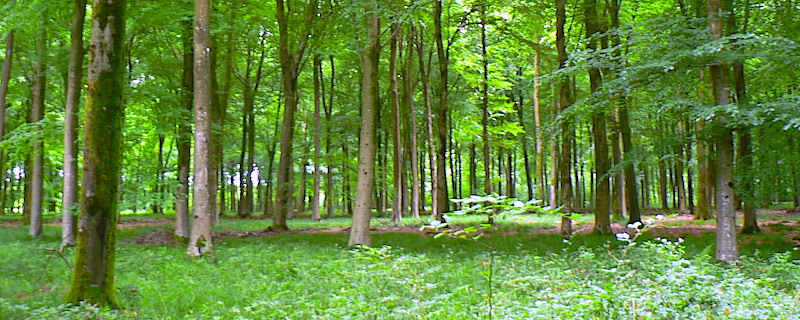Oct 2014
The Boundary
October 2014 Filed in: Human Landscapes

“No birds sing” Kitt’s Grave
At this time of year, our thoughts often turn to the grim and grisly end of autumn – All Hallow’s Eve – where, according to tradition, the veil between the physical and spiritual worlds is at its most porous. It is when, if the right arcane instructions are followed, travel between the realms is apparently possible but, as you will see, our physical boundaries – the liminal spaces at the edges of the parish – may hide gruesome secrets of their own.
It’s well known that criminals and suicide victims – also once considered guilty of ‘self-murder’ – were, throughout history, buried at crossroads. What might be a surprise is that unconsecrated burial is often found on parish boundaries and, frequently, where the border of three or more parishes came together.
Kitt’s Grave on Cranborne Chase is the last resting place of either an old Romany woman, who is buried where she wandered her whole life – between the parishes of Martin, Pentridge and Bowerchalke – a highwayman who was hanged and buried there for his crimes, or a sad girl who drowned herself in a well. The grave – likely a long-since ploughed-out Bronze Age tumulus – is mentioned in historic charters and correspondence, as is a gallows erected there by the kindly Abbess of Wilton during the 16th century. There has been a meeting of three boundaries here for at least a millennium; first Saxon monastic estates, later parishes and counties. There’s a touch of the numinous about the spot, though, on my spring visit there, the passerines belting out their fruity warbles clearly hadn’t received the memo stipulating that ‘no bird sings’, as the old legend insists.
Further north in the Orkney Islands, two graves on the parish boundary that straddles the Water of Hoy are those of forlorn souls. Betty Corrigall’s fibreglass gravestone may seem a little anachronistic, but it was fashioned 200 years after her passing – with three exhumations of her remains in the twentieth century, her death has been almost as restless as her life, which she ended when her lover deserted her. A tiny island in the nearby lochan, meanwhile, has the grave of Thomas Bremner, jilted just before he was to be married in 1827.
In Suffolk, to the north of the pretty village of Moulton, where a crossroads on the ancient Icknield Way intersects with the Cambridgeshire border a ‘gypsy shepherd boy’, who lost a sheep and hanged himself in fear of the consequences, is reputedly buried here. Though apparently well-tended with flowers and votive offerings, the grave is probably from the 17th century. Its attention comes from its link with nearby Newmarket races, where the colour of the flowers apparently signifies the winning jockey. Lucky for some.
Comments
